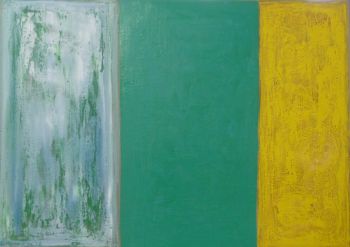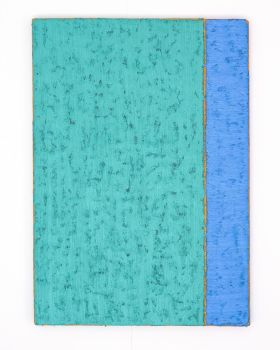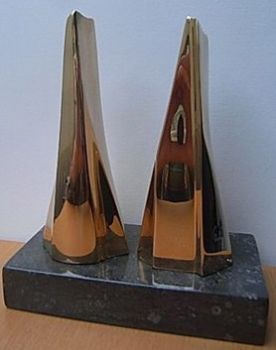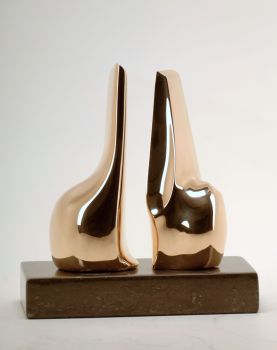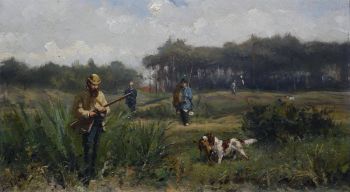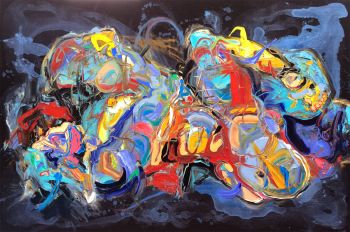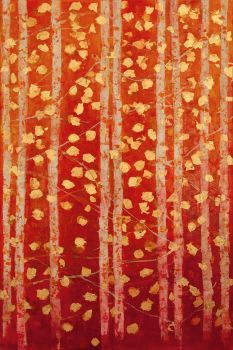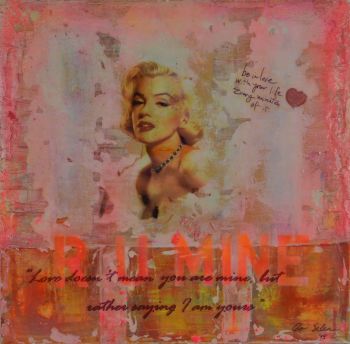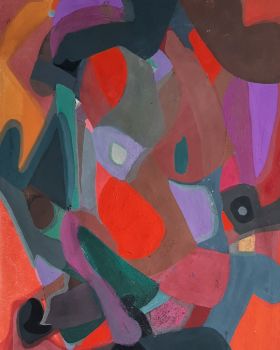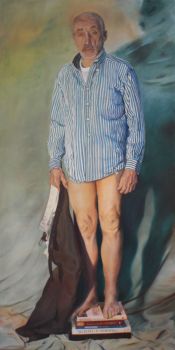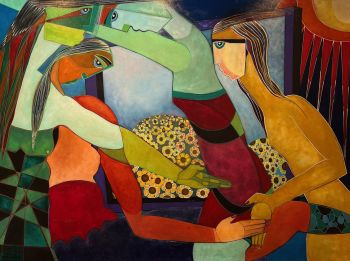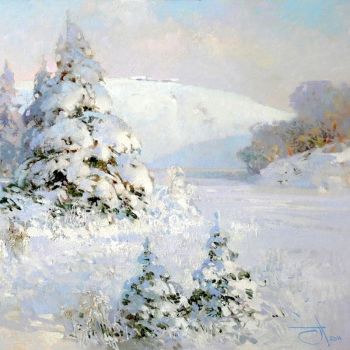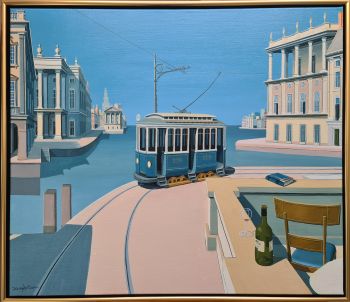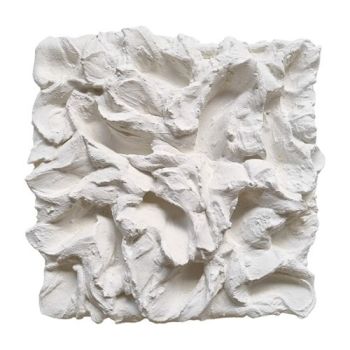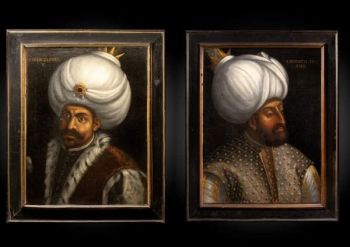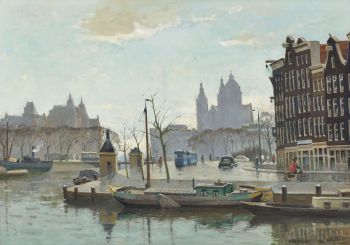Mid-Century Modern Dutch Oil Painting "Composition in White, Black and Blue" 1961
Georg Ruyter
Huile sur toile originale
70 ⨯ 60 ⨯ 2 cm
ConditionMint
€ 2.000 - 3.000
The Millen House
- Sur l'oeuvre d'artThis rare and significant work by George Ruyter captures his journey through various phases of modern art. Ruyter’s career from 1928 to 1960 encompassed figurative work, including drawings, wall paintings, frescoes, and mosaics. In 1941, he joined the Vereeniging Sint Lucas in Amsterdam, and in 1943, he became a member of the Amsterdam Independents. Post-1945, Ruyter began exploring geometric abstraction, and by 1968, his style evolved into Concrete art. In 1974, Museum Fodor in Amsterdam dedicated an exhibition to his work, underscoring his influence in the art world. Reflecting on his process in the *Catalog Fodor 20*, Ruyter wrote: “In general, I work with two opposing elements, which together form a totality that is both static and dynamic. I call it concrete design, something that asserts itself and is based on the properties of the surface and the material to be used. From this also follows the color scheme for each painting.” This approach is evident in his compositions, where structure, material, and color coalesce into unified yet dynamic visual statements.
- Sur l'artiste
Georg Ruyter (1913–1982) était un peintre et graphiste de renom basé à Amsterdam dont la carrière reflétait un profond engagement envers les styles artistiques en évolution, de l’abstraction figurative et géométrique au mouvement de l’art concret. Né et élevé à Amsterdam, Ruyter s’est lancé dans son parcours artistique en 1928 lorsqu’il a commencé une formation de professeur de dessin. De 1933 à 1937, il a perfectionné son art à la Rijksakademie van Beeldende Kunsten d’Amsterdam, où il a reçu une éducation formelle en peinture.
Après avoir terminé ses études, Ruyter a passé cinq années de formation à vivre à Haarlem et dans la ville frisonne de Sloten. Cette période lui a permis de s’immerger dans les paysages sereins et la quiétude qui ont souvent influencé ses thèmes artistiques. Il est finalement retourné à Amsterdam, où il a passé le reste de sa vie, consolidant sa place au sein de la communauté artistique dynamique de la ville.
Le répertoire artistique de Ruyter comprenait des paysages, des natures mortes et des portraits, mettant en valeur sa polyvalence et ses compétences techniques. Ses premières œuvres s'inscrivent dans un style figuratif, incorporant parfois des éléments d'abstraction géométrique. Cependant, après 1958, son style évolue considérablement, s'orientant vers l'art concret, une forme d'abstraction caractérisée par son accent sur la forme et la couleur pures, indépendantes des références extérieures.
En tant que membre actif de De Onafhankelijken (Les Indépendants) et de l'association d'artistes St. Lucas, Ruyter s'implique profondément dans la scène artistique néerlandaise, contribuant à des expositions et au discours artistique. Son travail explore l'interaction d'éléments opposés, qu'il décrit comme formant une « totalité à la fois statique et dynamique ». Il qualifie son approche de konkrete vormgeving (conception concrète), mettant l'accent sur les propriétés inhérentes de la surface et des matériaux qu'il utilise.
La philosophie et la méthodologie artistique de Ruyter soulignent son engagement à créer des œuvres autoréférentielles, existant purement comme des expressions de forme et de matière. Son approche unique le positionne comme une figure clé de l'art néerlandais du milieu du XXe siècle, reliant les tendances traditionnelles et modernistes.
Aujourd'hui, Georg Ruyter est reconnu pour son approche intellectuelle de l'art et sa capacité à intégrer harmonieusement des éléments contrastés dans des compositions cohérentes. Son héritage perdure dans l'appréciation de ses œuvres, qui continuent de captiver le public par leur équilibre entre forme, structure et émotion.
Êtes-vous intéressé par l'achat de cette oeuvre?
Artwork details
Related artworks
- 1 - 4 / 24
- 1 - 4 / 24
 Sélectionné par
Sélectionné parDanny Bree
 Sélectionné par
Sélectionné parDanny Bree
1 - 4 / 24- 1 - 4 / 12
























